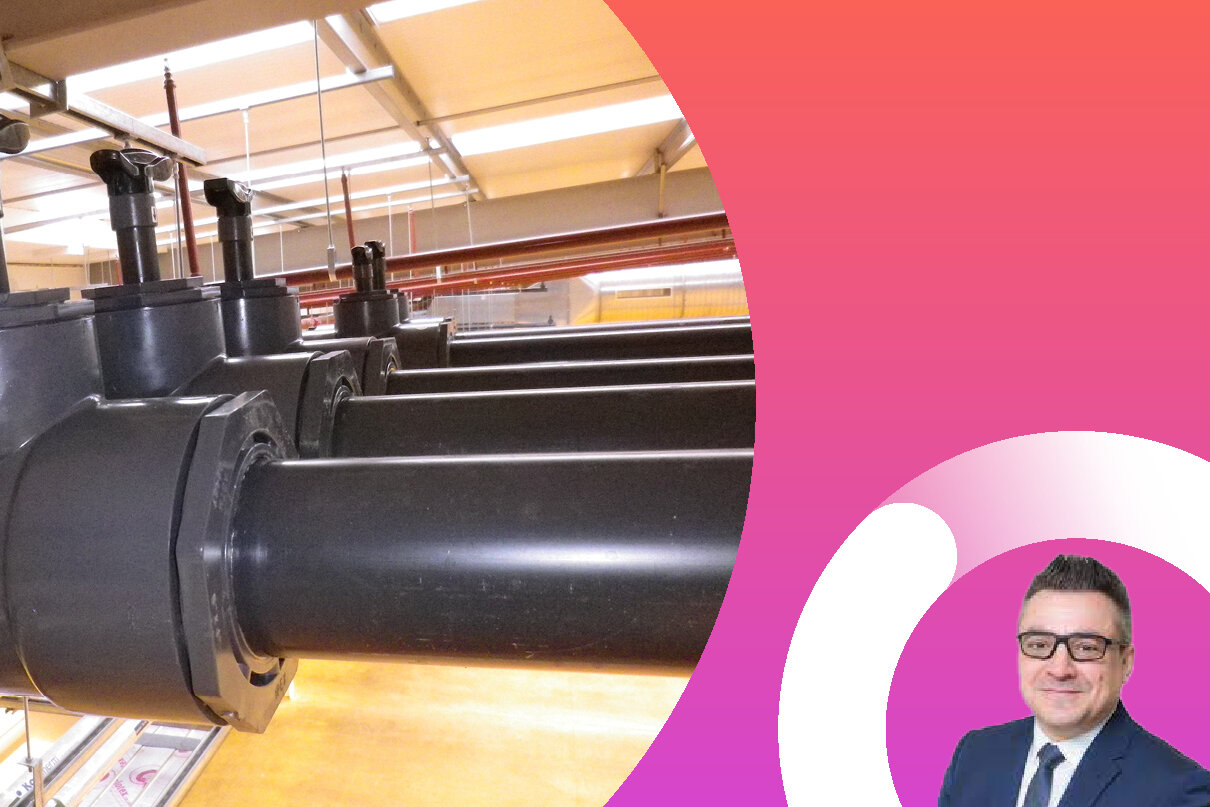
Pipe systems in an industrial setting can be complicated, transporting often dangerous substances in an efficient manner through complex buildings using a system of overhead pipes. However, they can pose a danger, not just to people working below, but also to assets in their vicinity if they leak.
David Thomas, Head of Technical Support Services from Aliaxis UK, examines why a ‘belt and braces’ system of piping is needed to prevent leaks, spills and damage.
With a raft of regulations and standards covering industry safety, especially for the transportation of hazardous materials, such as the Control of Substances Hazardous to Health (COSHH), it is essential that spill containment and leak containment processes are robust.
However, is containing a spill or a leak the equivalent of shutting the door after the horse has bolted? Would it not be better to work to prevent leaks in the first place, especially in overhead pipework, where any spill of a hazardous material could lead to injury, extensive damage, which is often expensive, and production shutdown whilst the leak is fixed and the spill contained?
As well as protecting people, asset protection is also becoming more prevalent, where any leak, especially from an overhead pipe, could have disastrous results, particularly in data bank centres or libraries, where rare books or manuscripts are stored.
It is vital, therefore, that a pipe system can safely carry chemicals or hazardous materials and that the pipe’s material is compatible with the chemical substances being transported to ensure the safety of both people and property.
The breakdown of a single walled pipe through corrosion will lead to a leak and the inevitable shutdown whilst the situation is contained and the pipe repaired. It is why the ‘belt and braces’ approach offered by dual-pipe systems can be extremely beneficial, especially for overhead pipe systems.
This approach means that in dual-contained pipework, such as with Durapipe’s Guardian range, in the unlikely situation there is an internal purge, the second pipe will prevent leaks. It means, should a leak occur in a primary line, the secondary line can capture spillage, preventing environmental contamination.
A dual pipe system can also make monitoring more straightforward, with technology available from other specialist suppliers that can detect and alert when fluids are present in the secondary pipework. Such a system can help reduce the risk of a total system shutdown, which can be costly for business.
The Health & Safety Executive has provided a Technical Measures Document that refers to secondary containment, in particular to concentric pipes, where pipes are sometimes provided with an outer shell or secondary pipe to protect against loss of containment.
It says this method can particularly be used when transporting very corrosive substances, for example bromine, or strong acids. Such systems are often used where there are long runs of pipe on overhead pipe bridges.
Specifying the right materials can therefore ensure the integrity and lifespan of the pipe system so that chemicals do not degrade plastic and rubber seals over time.
However, it can make selecting the right material and pipework system a challenge, which is why we created a Chemical Resistance Guide designed to help in the selection of the right piping system material for chemical applications. For example, the Guardian range from Durapipe, which allows the safe transportation of different fluids and some chemical concentrates without fear of corrosion and environmental pollution. It is also ideal for water and waste treatment applications.
Expertise from an in-house chemist and technical support team can assist with project-specific advice, including consideration of any ancillary agents that could come into contact with the pipework, plus advice on initial designs and specifications, installation guidance and on-site support.
While a dual pipe system may involve higher initial costs, the safety and operational benefits, particularly in critical industries, can justify these investments. In the event of an acid spill, companies could have a bigger environmental bill or more health and safety issues than the cost of installing a specialist dual-pipe system.
Such a system ultimately enhances overall resilience and safety in fluid transport applications, and while many industries are regulated to ensure safety; dual piping systems can help meet these compliance requirements more efficiently and effectively.
To find out more about specialist dual-contained pipework, explore Durapipe’s Guardian range.
